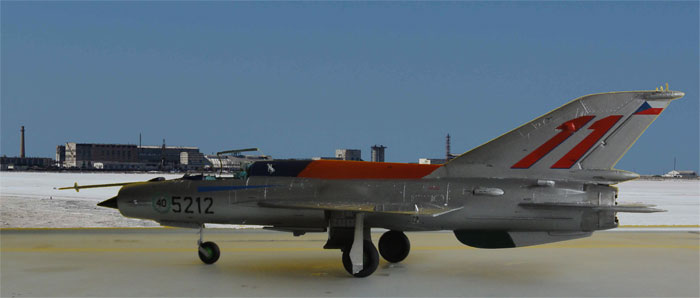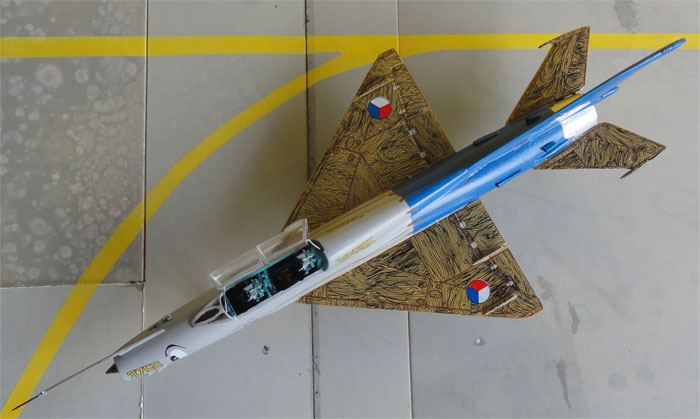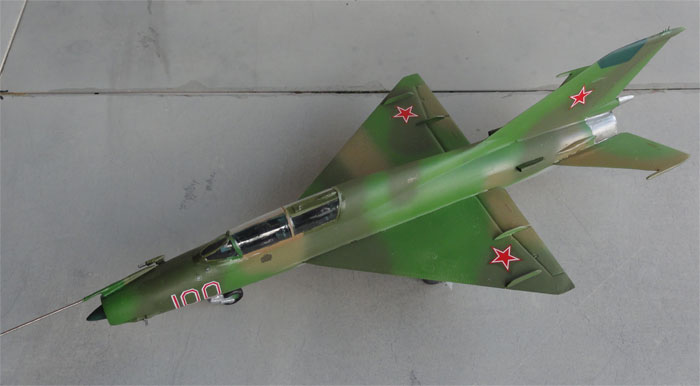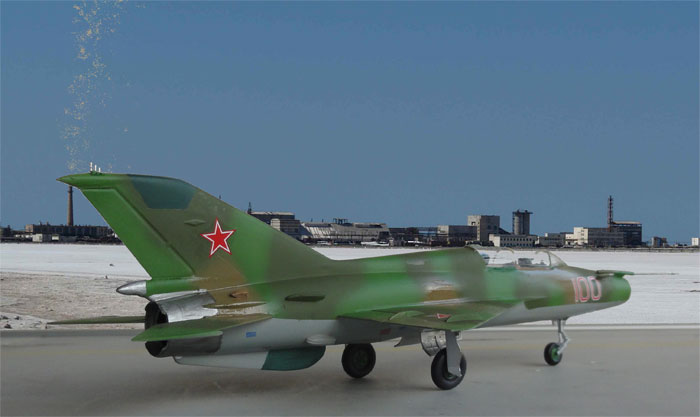(various 1/72 kits)
[ page 1 ]
1/72 scale kits of the Mikoyan Gurevich MiG-21 (and Chinese Shenyang versions)
OVERVIEW of 1/72 MiG-21 pages:
AEROTEAM MiG-21UM : this page 1
AGA MiG-21UM : this page 1
Akkura MiG-21MF : page 4
Condor MiG-21R : page 4
Condor MiG-21SMT : page 4
Eduard MiG-21MF : page 7
Eduard MiG-21MF LanceR-R conversion: page 11
KP "old kit" MiG-21MF : this page 1, page 3
KP "old kit" MiG-21UM : this page 1
KP "new" MiG-21MF/MA/R : page 8, page 9
KP "new" MiG-21 UM : page 10
Mistercraft/Mastercraft MiG-21SM : page 3
Revell MiG-21F-13 : page 2, page 5, page 6 (F-7)
RV Aircraft MiG-21MFN : page 2, page 7 (bis)
page 2
page 3
page 4
page 5
page 6
page 7
page 8
page 9
page 10
page 11
===============
History
The Mikoyan-Gurevich MiG-21 was designed in the Soviet Union as a high speed supersonic fighter in the nineteen fifties. It proved to be a very good design, with over 10,000 built in dozens of versions and exported to many Soviet influenced countries during the Cold War all over the World. Some MiG-21's were also license built like in China and India by HAL.
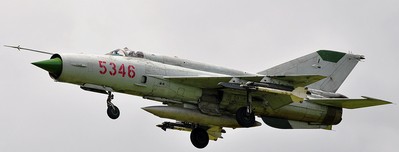
Development started with the Ye-1 in 1954 and later Ye-2 and Ye-4 test aircraft. At the beginning not a lot of information was available to the West on de details of this aircraft. It got a single straight air intake in the nose with a moving bullet for containing the shockwaves.
What later became the MiG-21, designed as a fighter, the aircraft got a high speed capability with a single powerfull Tumanskiy engine and with a delta wing planform (but still with tailplanes). It could fly over 2200 km/hr (about 1500 mph) but obviously at very high fuel consumption. So the MiG-21 had a short range and was often seen with fueltanks below the wing and central fuselage.
Several versions were developed over 30 years and a large variation of armament could be carried:
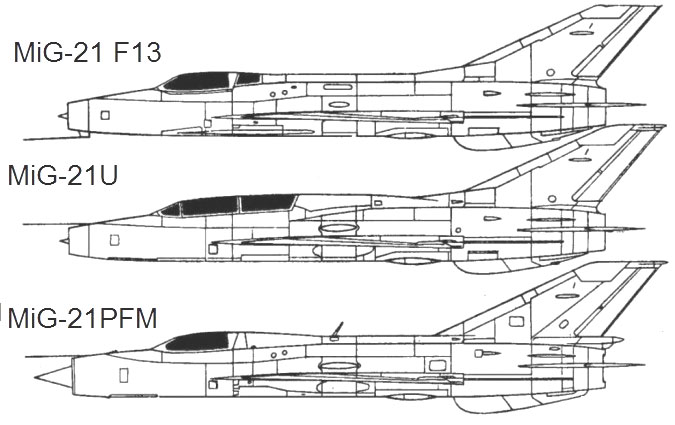



Main versions
of the MiG-21 are:
The
MiG-21F
was the first aircraft version put into production starting mid
1958 and had a straight delta wing. It was fitted with two NR-23
cannons
at the lower forward fuselage that were integrated in lower air brakes.
The pilot had the SK-1 ejection seat and used a basic radar. The pitot
tube is below the intake with a forward hinging canopy. It could not
fire any air to air misisles but could carry
fueltanks and 2 bombs. The MiG-21F had the initial small 66 cm diameter
main wheels. Later on also the port lower NR-30 canon was removed.
Probably about 80 were manufactured.
The MiG-21 F13 was based on the F but now could fire K-13/R-3S (NATO called "ATOLL") missiles, with 2 wing pylons equipped with APU-28 rails and later APU-13 rails. Now one 30 mm canon was fitted at the right, on the left a fairing was retained. This version could fire unguided rockets from pods as well. The forward hinged canopy also had to the rear a transparant extension to the thin spine. The large pitot tube was situated below the intake. The ventral fin became a bit longer than on the -F. The delta wing was the same as of the -F. The main wheels were of type KT-27 with a KT-38 nose wheel.
In 1961 the MiG-21PF appeared as "all-weather" interceptor and it was also exported to Warsaw Pact countries. The fuselage was changed and also the larger intake with the RP-21 radar and no cannon?. The canopy still hinged forward but the rear transparent extension was discarded with a fatter spine immediately aft of the single canopy faired into the thinner spine to the tailfin. The pitot moved to the top of the center intake and the NR-30 starboard gun removed. The later standard larger main wheels of 80 cm diameter were introduced with thicker fairings above the wing root. Versions exported to the Third World had less sophisticated systems and often had a wider-chord vertical fin and with brake chute fairing at its base. (HAL built it also under license in India).
The MiG-21PFS looked similar to the MiG-21PF but with the wing had blown flaps and also the broader fin. Later versions of the PFS got also a sidewards opening canopy with separate front windscreen.
The MiG-21PFM came in 1964 and was quite different than the previous versions. It got a much broader tail fin and no cannon. The canopy was split with a windscreen and a sidewards hinged aft canopy. Later versions again introduced a canon, now a GSh-23 cannon in an underbelly pod and the Kh-66 air-to-surface missile could be fired. This version was also mainly used by the Warsaw Pact (PFMA and PFMN by Poland, RFMN Romania and SPS by the DDR). (Probably the zero-zero KM-1 ejection seat was also introduced).
The MiG-21R from 1965 was the next generation and could carry a reconnaisance pod below the fuselage. The spine was thick and made larger for extra fuel. Exports were the RF for Egypt but also another MiG-21RF was the upgrade with R13-300 engines as in the MiG-21MF. The pitot (without vanes) is on top of the intake to the right. Often on the wing tip antenna fairings are installed.
The MiG-21S of 1964 was only used by the Soviet Union and based on the R. It got the RP-22 radar and the airframe was different from that of the MiG-21PFM by using the same saddle tank as in the MiG-21R. The MiG-21S could carry the GP-9 cannon pod and had four underwing hardpoints and the 2 outboard ones could also fuel drop tanks. It could also fire the R-3R missile.
Upgrades and improvements were continuously made.
The MiG-21M
from
1968 was the export variant of the MiG-21S with less sophisticated systems
but with a built-in twin barrel 23mm GSh-23L cannon. (also HAL license
built). CzechoSlowakia had the MiG-21MA re-engined with the Tumansky R13-300
engine.
The MiG-21SM
was
an upgrade of the MiG-21S using the R13-300 engine and with a built-in
GSh-23L cannon, as well as a considerably updated avionics package.
The MiG-21MF appeared in 1970 and NATO called it "Fishbed-J". It was based on the M and the export version of the MiG-21SM, with RP-22 radar and R13-300 turbojet. The aft canopy got a "rear view" mirror on top. The spine is thick and looks straight aft of the cockpit section and runs a bit into the vertical tail. The choice of weapons loads was increased with the addition of the R-60 (NATO: AA-8 "Aphid") and later the R-60M IR-seeking AAM. This version was also licence-built in India by HAL as the Type 88.
There are small differences between MF's depending on the Soviet manufacturing plant. MF's made at Sedivka Gorki have a deep cut-out on the sides of the engine exhaust and an oval-shaped bulge in front of the lower fuselage main gear bay. MF's made a Stracena Moskou have a small cut-out at the exhaust, s-shaped bulge in front of the gear bays and also a large raised oval panel on the top of each wing halve. There are also some tiny differences in ammo and maintenance hatches.
The MiG-21SMT of 1971 (NATO "Fishbed-K") was based on the MiG-21SM with increased fuel capacity in its much larger and bulky spine with runs all the way the vertical tail base.
The MiG-21bis from 1972 (NATO "Fishbed-L/N") had the Tumansky R25-300 turbojet engine and had a great number of other advances over previous types. It could fire the R-60 missiles and had a new radar. The spine is a bit longer than on the MF and runs half way the vertical fin (but significantly thinner and smaller as to the SMT) and the intake ring is slightly different than on the MF.
The MiG-21ST retained the older style smaller spine/saddle tank of the MiG-21bis and was thus externally indistinguishable from the MiG-21bis.
In several countries upgrades were done. Bulgaria updated the MiG-21MFR in 1995 with also recce pods. Much later after the collapse of the Berlin Wall the MiG-21MFN was the Czech Air Force MiG-21MF upgraded with NATO standard avionics. The MiG-21bis-D of Croatia was modernized for NATO.
Trainers
Several
MiG-21 trainer versions with two seats (student front and instructor rear)
were developed. The MiG-21U that appeared in 1961 was the two-seat
training version based on the MiG-21F-13. There is a windscreen and two
sidewards separate hinging canopies. It has two airbrakes: one below aft
of the nose gear and one aft of the main gear bays. The small fin was retained
and later production "U" aircraft got the broader fin as of the PFM and
the larger 80 mm main wheels.
The MiG-21UM from 1968 referred to by NATO as "Mongol-B" was the two-seat training version of the MiG-21MF but it looks that it retained the "small F intake" but the large tailfin like the MF. Seats are KM-1U for the student and KM-11 for the instructor. The instructor has a foldable periscope at the aft canopy section. Four underwing pylons are possible and a central pylon for a fuel tank.
Test aircraft
A special test
aircraft was the "Analog" A-144, officially the MiG-21i 21-11. Purpose
was first to test a tailless aircraft with ailerons and flaps. The next
purpose was to familiarize Russian pilots of the forth coming supersonic
Tupolev TU-144 airliner flight characteristics. Check
out a model here...
CHINA Peoples Republic
China manufactured the MiG-21 as Chengdu J-7 in license of the MiG-21F-13 and known also as the F-7A with 1 canon of 30 mm at lower starboard/right fuselage. It got a Chinese WP-7 jet engine. The F-7 was the export version. The J-7 "III" was a reversed engineered MiG-21 MF. More Chinese J-7 versions were developed. More info on page here....

In 1/72 scale many many kits have appeared over the years. Starting with the very old FROG (later Hasegawa) kits. A kit with the best outline at the time was the old KP kit from CzechoSlovakia. This kit was crude but there was not a lot to choose from. Later the FUJIMI series of MiG-21 in several boxes came which however mixed up several versions so these kits are not totally accurate. The KP was also copied and changed somewhat by various brands the last decade. Some got recessed panellines but still had crude parts. Examples are AEROPLAST, MASTERCRAFT, EASTERN EXPRESS, AGA, AKKURA and CONDOR. Bilek also had a kit (but unknown to me). The MiG-21UM trainer was also issued and copied like AEROTEAM and others.
UPDATE: more recently, RV, the "new KP" and Eduard have released nice new 1/72 kits as well. Many of those can be seen on these MiG-21 modelling pages.
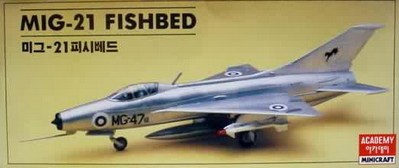
Several 1/72 kits will be built in
this modelling report (but not all kits issued !!). ALSO CHECK OUT THE
1/32
SCALE MiG-21 models made.......
Some general colour suggestions
for the MiG-21 models:
- interior of cockpit: russian interior green AKAN 73004 acrylic
- KM-1 ejection seat: varies, such as AKAN 73008 blue or light grey; light grey or black head rest; green/grey parapack; red ejection handles;
- wheel hubs: green using Revell Aqua 364 acrylic;
- gear leg colours vary, depending on scheme; often light grey;
- various airframe antenna panels (tip of fin, lower ventral fin etc): Revell Aqua 361 green/olive;
- nose intake bullet: varies but often green using Revell Aqua 361 acrylic;
- russian pale blue (many undersurfaces): AKAN 73008 acrylic pale blue;
- exhaust areas fuselage end: metal/ burned metal: any colour desired as it varies.
NOTE: in many model kits Soviet weapons are very inaccurate in shape. I recommend using the "Soviet Modern Air Armament" ICM set #72101 to get far better stores. ICM released later various other sets as well.
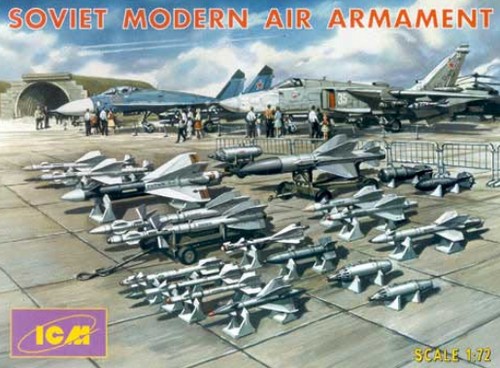
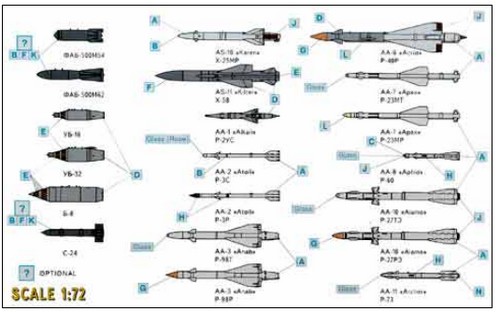
Soviet and Warsaw Pact operated MiGs had the IFF SRO-2 system with the typical 3 "beeps/ probes" antennas.
OK, now on to the kits!
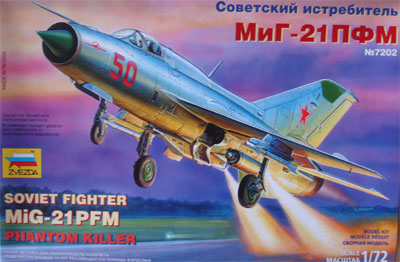 ...........
...........
The ZVEZDA MiG-21PFM is a nice kit but rather basic. It was made a few years ago as a Hindustan (HAL) MiG-21 "MF" of the India AF without any modification. Check the model made out here.....
.....
KP
The old Kovozavody Prostejov (KP) kit #19 is for a MiG-21 MF. (Note that this is the original old KP kit (later the KP brand name was "purchased" by other manufacturers like KOPRO, but often their issued kits are NOT the original KP!).
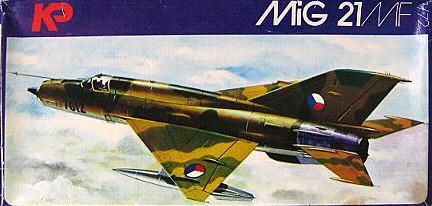
The parts in this old KP kit are crude but the outline and dimensions look OK. There are about 50 parts with 2 fuel tanks, a couple of crude ATOLL missiles and very crude unguided rocket pods in the kit. There is a cockpit "tub" but the SK-1 seat is very basic. The clear parts often have scratches and the canopy looks very inaccurate. The kit I had has decals for a couple of Czech aircraft and a Hongary MiG-21. Decals are vey crude however and almost unusable. There is also a lot of flash (thin plastic) that needs removal.
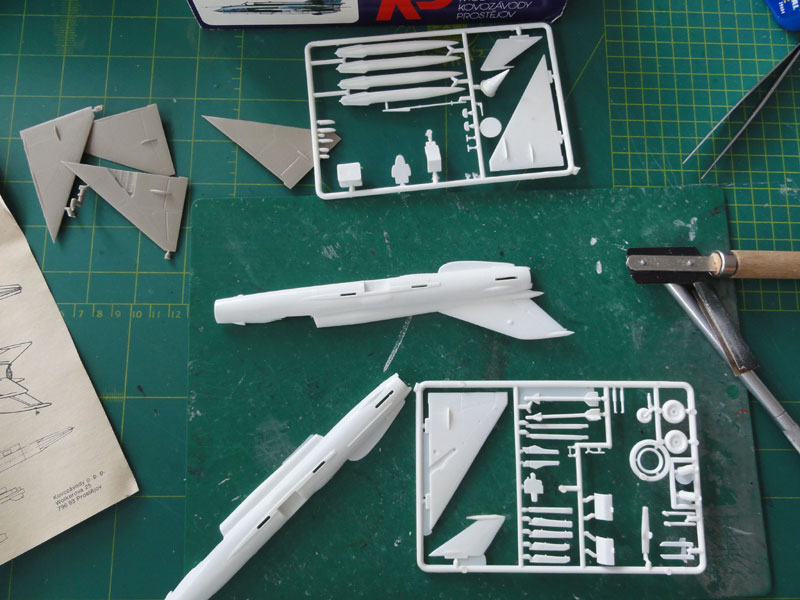
The kit has raised panel lines. It
is a matter of taste if you want to keep them on this model. I removed
most of them with sanding them during assembly.
It was decided to make this model with not a very big effort. Putty and sanding is required. The main gear bay wheel wells are not deep (I painted a gloss black "ceiling"). The various intake scoops at the rear fuselage are there but very crude. There is also not an actual exhaust nor an intake tunnel. I simply painted these areas black inside.
The model got a base grey coat to reveal any gaps.
The KP model was finished as a MiG-21MF Czech aircraft in a "40" aniversary scheme with a bare metal base scheme but with red and blue panels. The base colour was ALCLAD II dull Aluminium applied with the airbrush and the coloured areas after masking also airbrushed. I can not recall where the decals came from........
This old KP kit has a wrong shaped canopy, it is too bulky and curved. The bad kit canopy (and windscreen) was replaced with a vacuform one from the PAVLA canopy set #7220. This set has numerous canopies that are good replacements for the many crude canopies found on the old kits.
Final details were added after decalling.
The wheel hubs were painted bright green, the aft fuselage "burned metal"
and the cockpit interior "Russian interior green" (see general colours...).
The rest of the undercarriage was set in place. The large main gear doors
(parts #18 and #20) were reduced 3 mm in length and set at an angle.
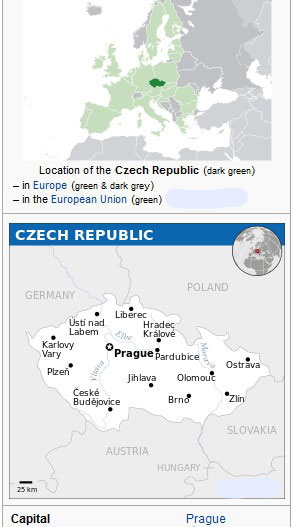
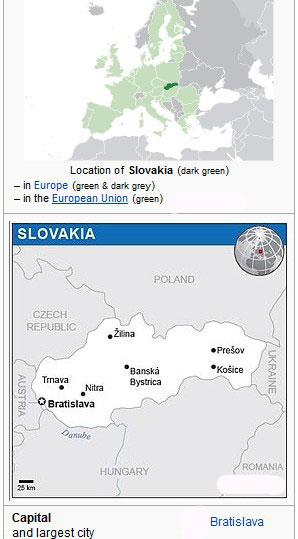

This kit was finished in a CzechoSlovakia scheme and the real aircraft were received in 1971 to 1975 as a still "united" Warsaw Pact country.
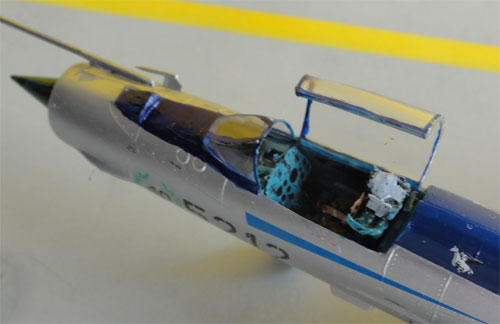
MiG-21MF
Czech aircraft in a "40" aniversary scheme
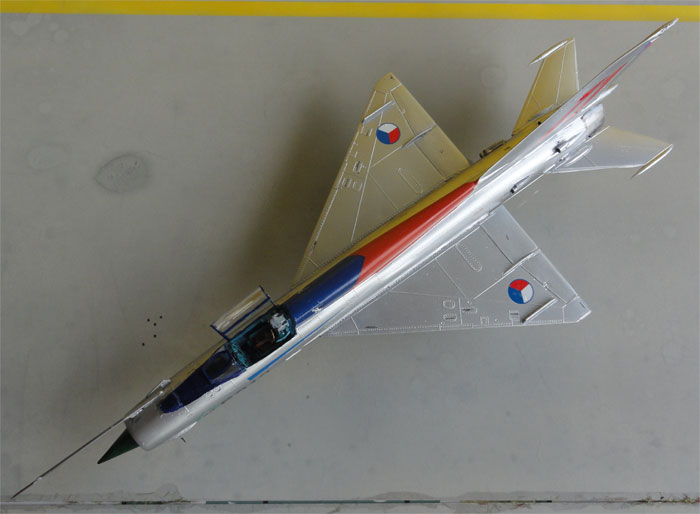 .
.
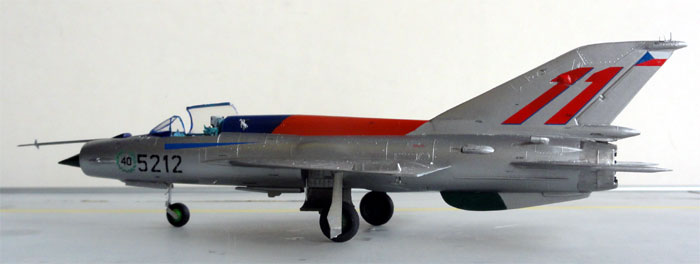
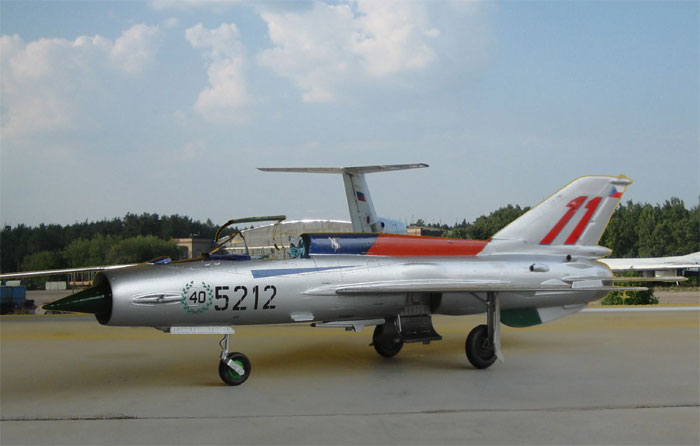
Note also the smaller stencilling
seen on the airframe.
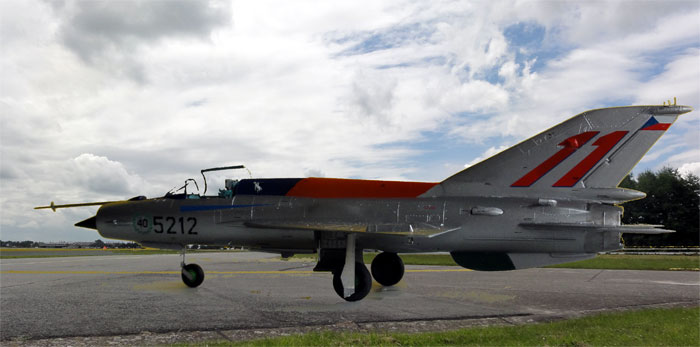
AGA
This AGA kit from Poland looks as based on a "copied" Kovozavody Prostejov (KP) single seat MiG-21 but with new parts for the MiG-21UM trainer. There were no earlier kits of the two seater UM. (NOTE: in 2019 the new Kopro Prostejov released in 2019 a brand new MiG-21UM kit).
Some parts in the AGA are "re arranged" in their sprues as compared to the old KP. So the same basic comments apply to the assembly of this AGA kit. On the instructions not even the MiG-21 version is indicated but a small drawing refers to the MiG-21 UM .
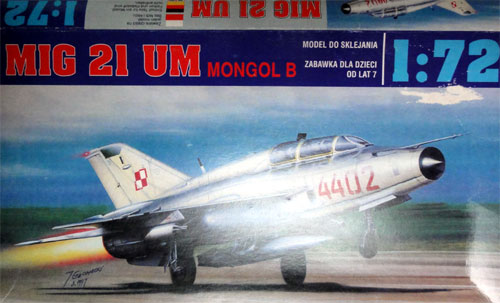
box
art
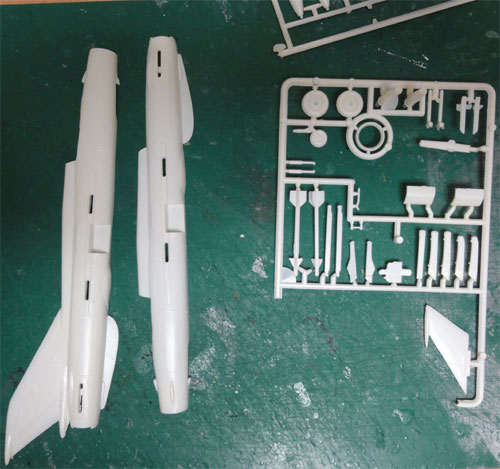
Assembly is basic and was done straight
forward. I added pieces of plastic card inside the cockpit.
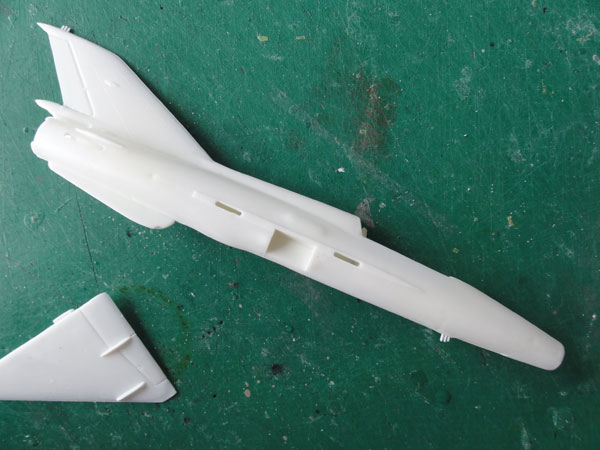
The model was sanded smooth with
no panel lines left. For the UM I used a PAVLA resin set 7229 for
the details. It has seats and a new thin vacuform canopy.
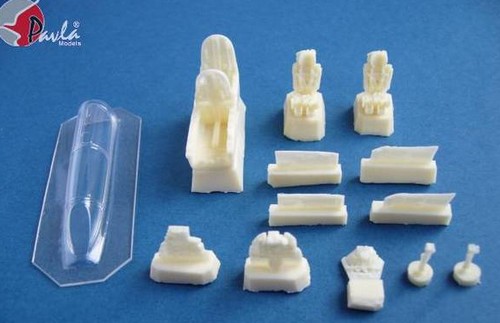
This model was finished in a scheme
for the Czech AF "stress team" MiG-21UM. I got from a friend the decals
from KOPRO kit #94154. (this is a similar finish as the large 1/32
Trumpeter kit made many years ago, look
here...).
This 1/72 model was airbrushed in
the acrylic water based colours :
Light grey (Gunze Sangyo Mr. Hobby acrylic
H308), bright blue (Gunze Sangyo H25 acrylic), wood (Revell 88 Aqua).
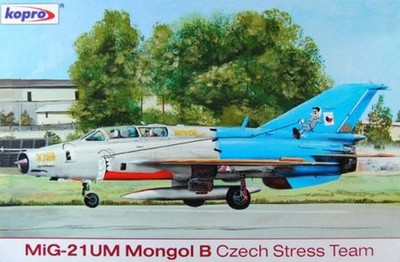
The canopy was also replaced with
a vacuform PAVLA set 7229 UM one. The KOPRO decals went on pretty good
but are VERY thin so be carefull when applying them.
Smaller parts were added like the gears, antennas and pitots. The model finally got a gloss varnish coat using a mix of Johnson Future / Pledge thinned with 30% alkohol. UPDATE: a better thinner is Gunze Sanyo Levelling Thinner acrylic.
Czech
AF MiG-21UM "Stress team"
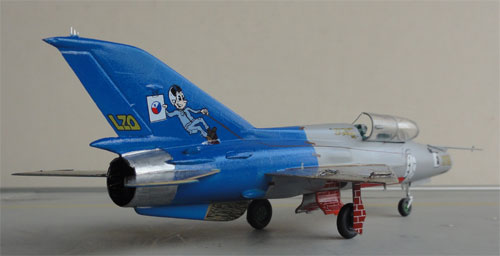
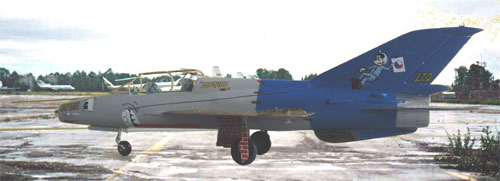 ......
......
AEROTEAM
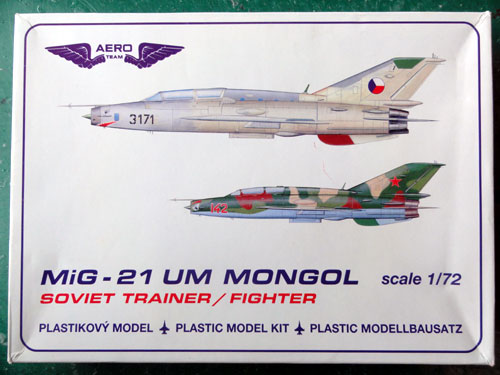
This 1/72 kit is for a two seater MiG-21 UM and is a "copy" of the AGA kit .
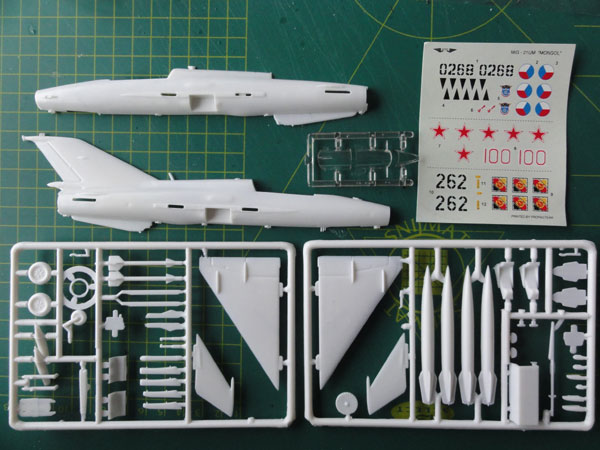
Here a comparison (AGA kit upper left, AEROTEAM lower right).
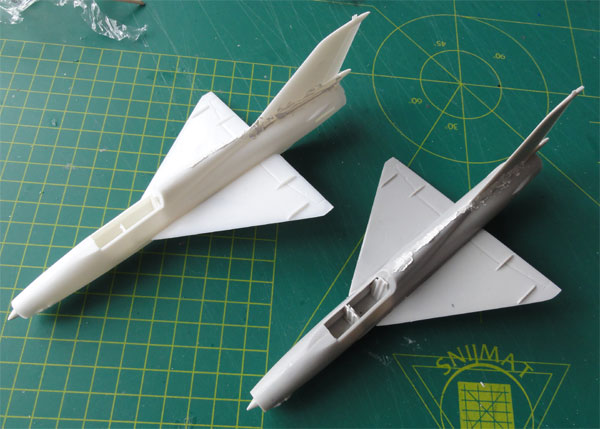
The AERO TEAM MiG-21 UM kit was simply assembled.
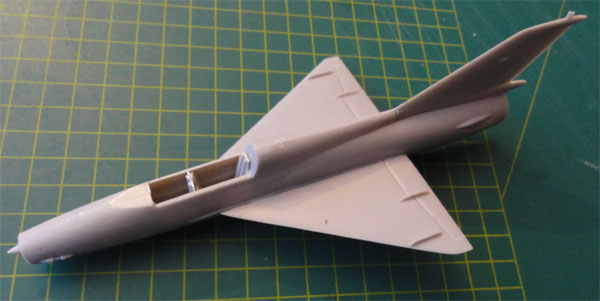
Some plastic strip is needed at the wing-fuselage joint to close gaps along with putty. Note the undeep main gear wells. I painted their "ceiling" gloss black.
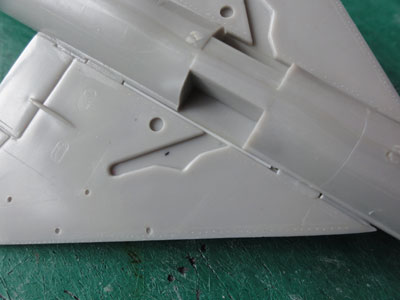
The two seater kit canopy was replaced
with a thin vacuform one from the PAVLA set 7220. The scheme was
picked as in the kit for a Soviet AF MiG-21UM with camouflage scheme.
I airbrushed the colours:
- Gunze Sangyo H303 acrylic dark green,
- Revell Aqua 360 light green,
- Gunze Sangyo H310 brown,
- and lower surfaces light grey Gunze Sangyo H324.
Basic decals are the Soviet VVS stars
as per kit. I used also some smaller stencils from the Revell MiG-21 F13
kit (also on the stack). Finally details were set in place: the landing
gears, pitot, and so on. The model finally got a couple of semi-dull varnish
coat using a mix of Johnson Future
/ Pledge thinned with 30% ketanus alkohol and with a few drops mixed
in of Tamiya matting agent "Flat Base" X21 acrylic.
The model was made as a Soviet
V-VS MiG-21UM "red 100" coded


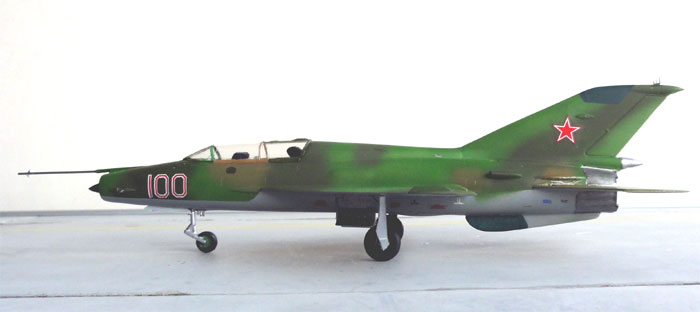

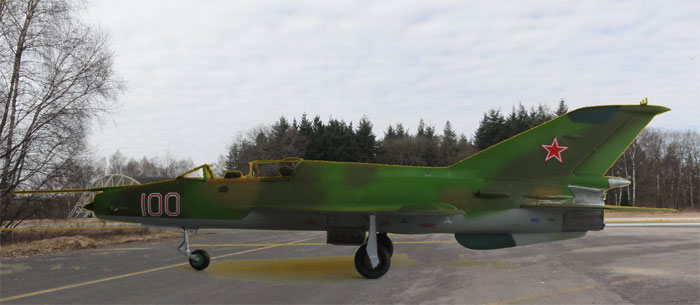
MiG-21UM Soviet VVS
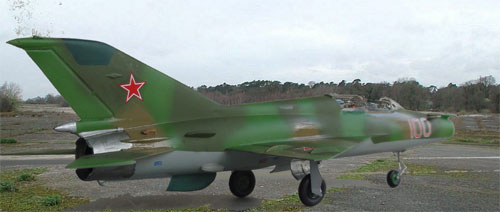
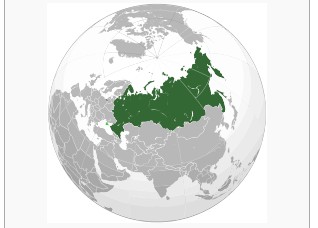

On to next MiG-21
[ Page 2.... ]
References:
 ..
..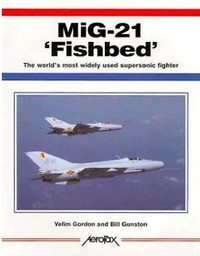
Soviet MiG-21 family:
- MiG-21, Yefim Gordon, Aerofax, Midland Counties Publications
- BUNRIN-DO, MiG-21, book of the "famous airplane series" of november 1974
- MiG-21, 4+ publications, CzechoSlowakia
- Mikoyan Gurevich MiG-21 "Fishbed", Vladimir Trendafilovski, Alan Hall publications, Warpaint no.91
- Mikoyan MiG-21 Fishbed, Squadron Signal Publications: Walk Around 37 (Part 1) and 39 (Part 2)
- Mikoyan MiG-21MF, Verlinden publications, Lock On No.21
- "Soviet and Russian Military Aircraft in..." series by Yefim Gordon and Dmitriy Komissarov: (1) in Africa , (2) in Middle East and (3) in Asia. Published in the Hikoki series, 2013 - 2014
- Modern Chinese Warplanes, authors Andreas Rupprecht and Tom Cooper, Harpia publishing, 2012
- China Aviation Today, China Aviation Press Industry, (official Chinese "promotion" edition).
Internet:
-
Wikipedia
- Walkarounds on IPMS NL website
Back to 1/72 Models.......
(c) Copyright Meindert "designer"/ All rights reserved. Your comments are welcomed by webmaster
Created this page
January 16, 2015
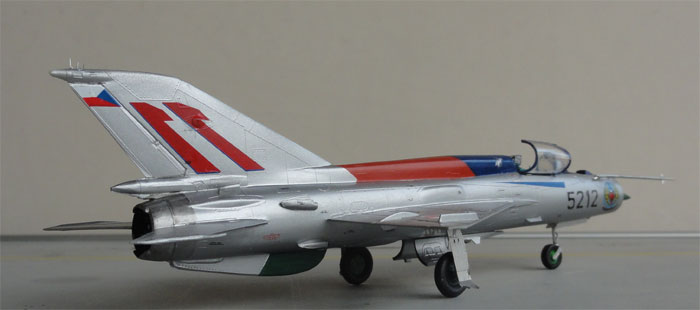 .
.
